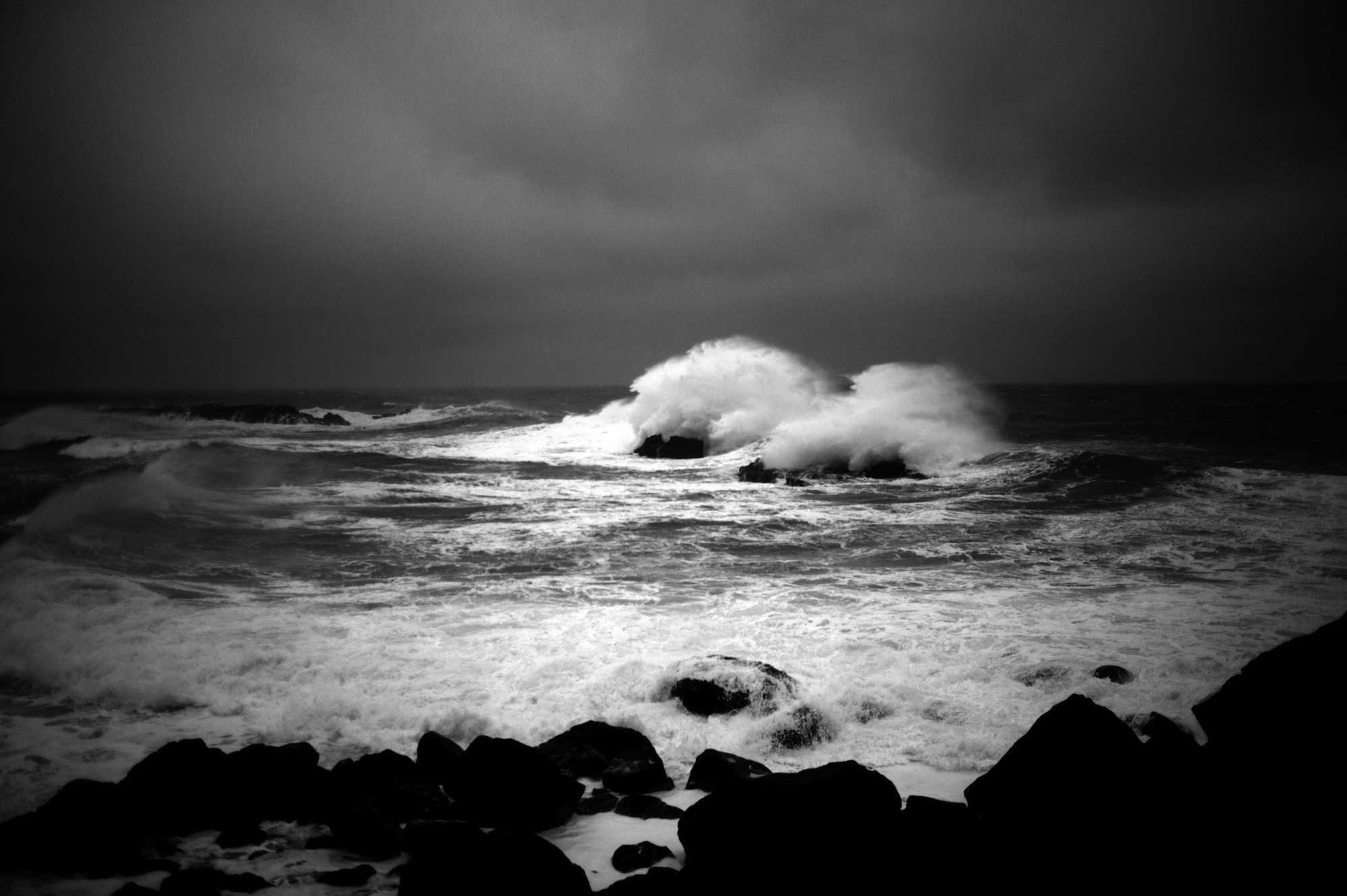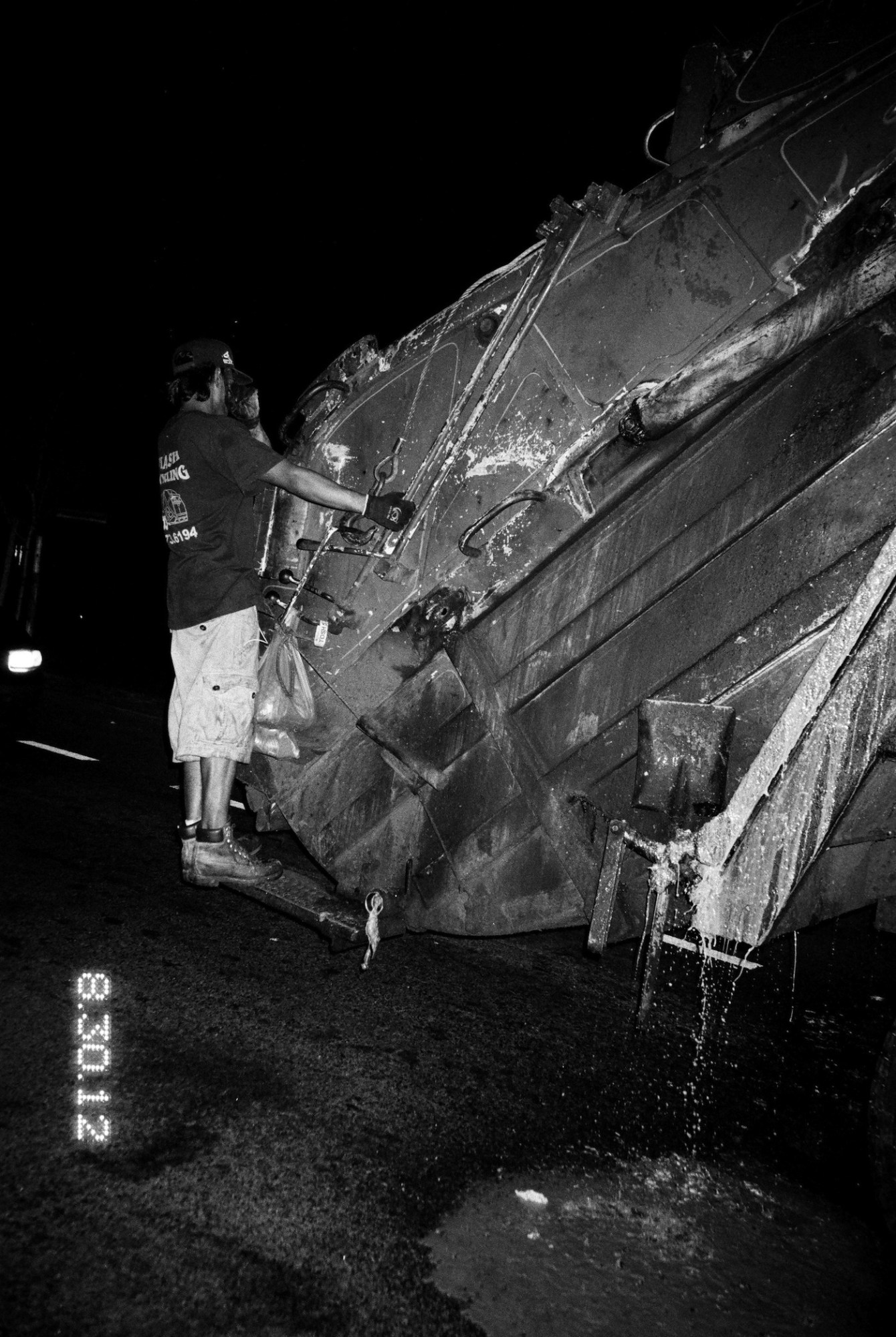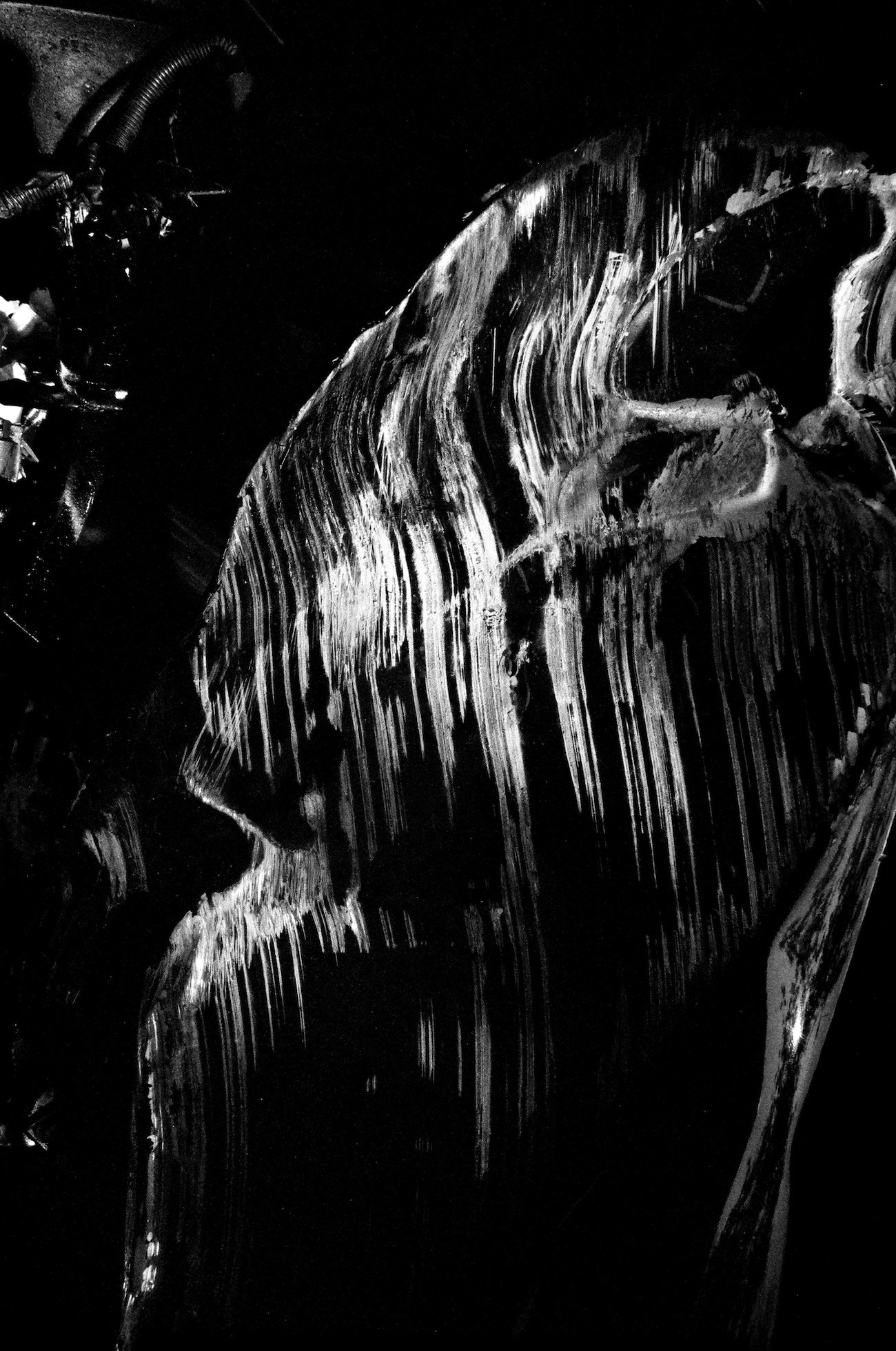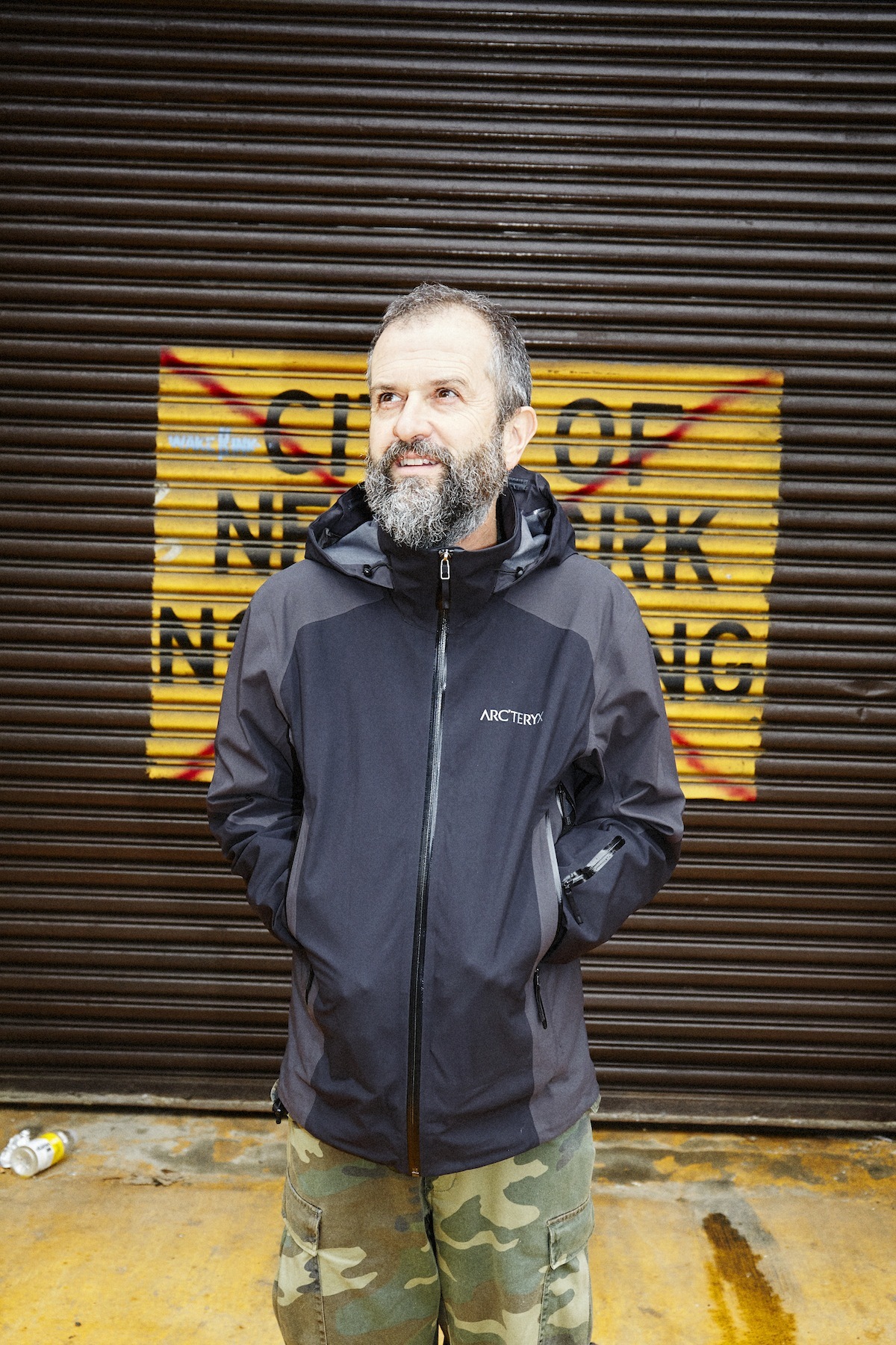Walking four blocks among Chelsea’s constellation of galleries, Ari Marcopoulos quietly shoots three cars and a strange pile of sand. We pass a nearby show he’d been wanting to see, so we pop in with him. He scrawls his name in the guestbook, its first, possibly only, signature. He spies a bike that looks interesting and strikes up a conversation with its owner, a messenger dripping in heavy padlocks. With few words exchanged, Ari takes it for a test ride. “He’s pretty good,” the messenger notes as Ari cruises around tourists on the sidewalk, “That’s a tough bike to ride.” “I’m very much into photographs I take in the present, in what I’m dealing with at the time,” Ari told me of the new works in his show. After spending just 15 minutes on the street with him, it became easier to understand why.
Ari relocated to New York from his native Netherlands back in 79. At 22-years-old, his first job was printing black and white images for Andy Warhol. Two years later, he became legendary photographer Irving Penn’s (who he still refers to as ‘Mr. Penn’) assistant. While Penn’s legacy lies in his iconic studio portraiture, Ari got his start on the streets documenting dynamic facets of America’s youth culture, straight up. His intimate yet immediate snaps of skate rats, graffiti tags, and New York City still lives have become Supreme collabs and Jay-Z album covers, as well as filled the pages of over 200 books and zines.

But Ari doesn’t live in the past. L1032015 might take memory as its starting point, but the show’s works explore it as psychological process rather than an act of longing. Breathtaking, low lit landscapes, close up car collisions, graffiti tags, and video footage of a plane emerging from fog all create a certain mood, but don’t deal in nostalgia. With a few exceptions, these images were all taken within several days of each other; many still bear their date stamps. “This show deals with memory in that it’s a combination of conscious and subconscious thought,” Ari explains. “Things that you think about and might want to photograph, or what your instinct tells you to photograph, are combined with memory—how memory can change things. Memory is not really exact. You fill in things.”
Filling in those gaps is exactly what L1032015 is about. Ari might have made his name as a documentarian, but this show encourages a different kind of viewing: “Photographs are usually about the subject and what you see, or there’s a signifier, something that triggers you to think, ‘This is a sad person, this is a happy person, this is a beautiful tree,'” Ari explains. “What’s more important for me is to present something and have the viewer then work with it on their own and see what they get out of it.”

Repetition and abstraction factor centrally to this ambition. For example, Ari photographed undercover cop cars every time he saw them. While the viewer might interpret the image as a statement about authority or surveillance, for Ari, the compulsion to make images creates something else entirely: “By making it repetitive, it almost loses meaning for me as a cop car. I’ve become more fascinated by its shape.” This space between subjects and abstractions, conscious and subconscious, is pushed further by the show’s non-descript, numeric title, “derived from the number a digital camera will assign to the photos as you take them. These numbers always stay on the files in order to be able to archive them.” Ari notes. “I didn’t want a poetic title, I didn’t want any expectations, so I kept the numbers all the way through.”

Amongst these arbitrary numbers and abstract shapes are fragments of Ari’s own memory: “There’s a photograph of my studio floor. I wanted to make a zine about memory that involves my family, so there are elements of my memory from when I was younger that have to do with growing up in the Netherlands at a time when there was a lot of turmoil and a lot of fear—the Vietnam War, the assassinations of JFK and MLK, war in Nigeria and Biafra, terrorist attacks, all these news headlines, and the Cold War,” Ari says.
But while Ari has clearly carved his own clarity, his work is still driven by uncertainties: “If you don’t have doubt, everything probably ends. When you just feel you can do whatever you want, or that you’re entirely certain, that doesn’t work,” he says. “Doubt is the most important ingredient in everything.”

Credits
Text Emily Manning
Photography Brayden Olson
Images courtesy Marlborough Chelsea and the artist
